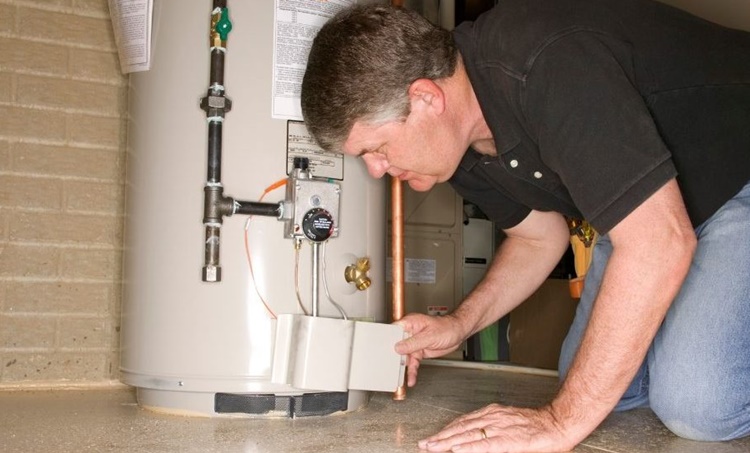Ensuring Longevity of Your Home's Hot Water System: Maintenance Advice
Ensuring Longevity of Your Home's Hot Water System: Maintenance Advice
Blog Article
Just how do you feel when it comes to What Kind of Maintenance Do Water Heaters Need??

Warm water is essential for everyday comfort, whether it's for a rejuvenating shower or cleaning dishes. To guarantee your warm water system runs efficiently and lasts much longer, routine upkeep is key. This post supplies functional suggestions and insights on exactly how to keep your home's hot water system to stay clear of interruptions and costly repairs.
Introduction
Keeping your home's hot water system might seem overwhelming, yet with a couple of basic steps, you can guarantee it runs smoothly for several years to find. This overview covers whatever from understanding your warm water system to DIY maintenance ideas and knowing when to hire professional help.
Value of Preserving Your Hot Water System
Normal upkeep not just prolongs the lifespan of your warm water system but likewise ensures it operates successfully. Overlooking upkeep can bring about decreased efficiency, higher power bills, and even early failure of the system.
Indicators Your Warm Water System Requirements Maintenance
Recognizing when your hot water system requires interest can prevent significant issues. Look out for signs such as irregular water temperature level, strange sounds from the heater, or rustic water.
Recognizing Your Warm Water System
Before diving into upkeep jobs, it's handy to understand the standard components of your warm water system. Commonly, this consists of the hot water heater itself, pipes, anode rods, and temperature level controls.
Monthly Maintenance Tasks
Regular regular monthly checks can assist capture small issues prior to they escalate.
Flushing the Hot Water Heater
Purging your hot water heater gets rid of sediment accumulation, enhancing performance and prolonging its life.
Monitoring and Changing Anode Rods
Anode poles avoid rust inside the tank. Examining and replacing them when worn is critical.
Inspecting and Readjusting Temperature Level Setups
Readjusting the temperature level setups makes sure optimum efficiency and safety and security.
Do It Yourself Tips for Upkeep
You can do a number of maintenance tasks yourself to maintain your warm water system in leading problem.
Looking for Leaks
Routinely evaluate pipes and links for leakages, as these can cause water damage and higher expenses.
Examining Pressure Alleviation Valves
Checking the pressure safety valve guarantees it works properly and protects against too much pressure buildup.
Insulating Pipelines
Protecting warm water pipelines reduces heat loss and can conserve power.
When to Call a Professional
While DIY upkeep is advantageous, some issues call for expert know-how.
Facility Concerns Needing Expert Assistance
Examples consist of significant leaks, electric issues, or if your water heater is continually underperforming.
Routine Specialist Maintenance Conveniences
Expert maintenance can consist of complete examinations, tune-ups, and making sure compliance with safety and security criteria.
Conclusion
Normal maintenance of your home's warm water system is vital for effectiveness, durability, and price savings. By adhering to these ideas and knowing when to seek expert help, you can make certain a trusted supply of warm water without unexpected disruptions.
Water Heater Maintenance Tips
Test the TPR Valve
Shut off the power and the cold-water supply valve. Place a bucket under the pipe connected to the temperature-pressure-release (TPR) valve on the top or side of the tank. (This valve opens if the tank pressure gets too high.) Lift the valve’s tab to let some water out, then let go. If water keeps flowing, drain the tank partway, unscrew the old valve with a pipe wrench, and install a new one. Check the Anode Rod
Put a hose to the tank’s drain cock and let out a few gallons of water. Now fit a 1 1/16-inch socket onto the rod’s hex head on top of the heater (or under its top plate) and unscrew the rod. If it’s less than ½ inch thick or coated with calcium, buy a new one, wrap its threads with Teflon tape, put it back in the tank, and tighten securely. Use this segmented rod if headroom above the tank is limited. Drain the Tank and Wash Out Sediment
Drain the remaining water in the tank into the bucket, then stir up the sediment on the tank’s bottom by briefly opening the cold-water supply valve. Drain and repeat until clean water comes out of the hose. Close the drain cock, refill the tank, and turn its power back on. Adjust the Temperature
Find the temperature dial on the side of the tank and unscrew its cover. Adjust the dial to 120 degrees using a flathead screwdriver. For every 10 degrees the temperature is lowered, you can expect to save up to 5 percent in energy costs. Turn the water heater off or the thermostat down to its lowest setting if you plan to be away from home for more than three days. Insulate the Pipes
Buy some self-sticking 3/8-inch-thick foam pipe insulation that matches the pipes’ diameter. Slide the foam over the hot-and cold-water pipes as far as you can reach. Insulating the cold-water pipe prevents condensation in summer. Peel the tape and squeeze the insulation closed. If the pipe is 6 inches or less from the flue, cover it with 1-inch-thick unfaced fiberglass pipe wrap. https://www.thisoldhouse.com/plumbing/21016402/how-to-maintain-a-water-heater

I ran across that write up on Tips on Maintaining a Water Heater when scouting around the internet. So long as you enjoyed our article if you please consider to share it. Thanks a lot for being here. Kindly check up our site back soon.
Call Today Report this page